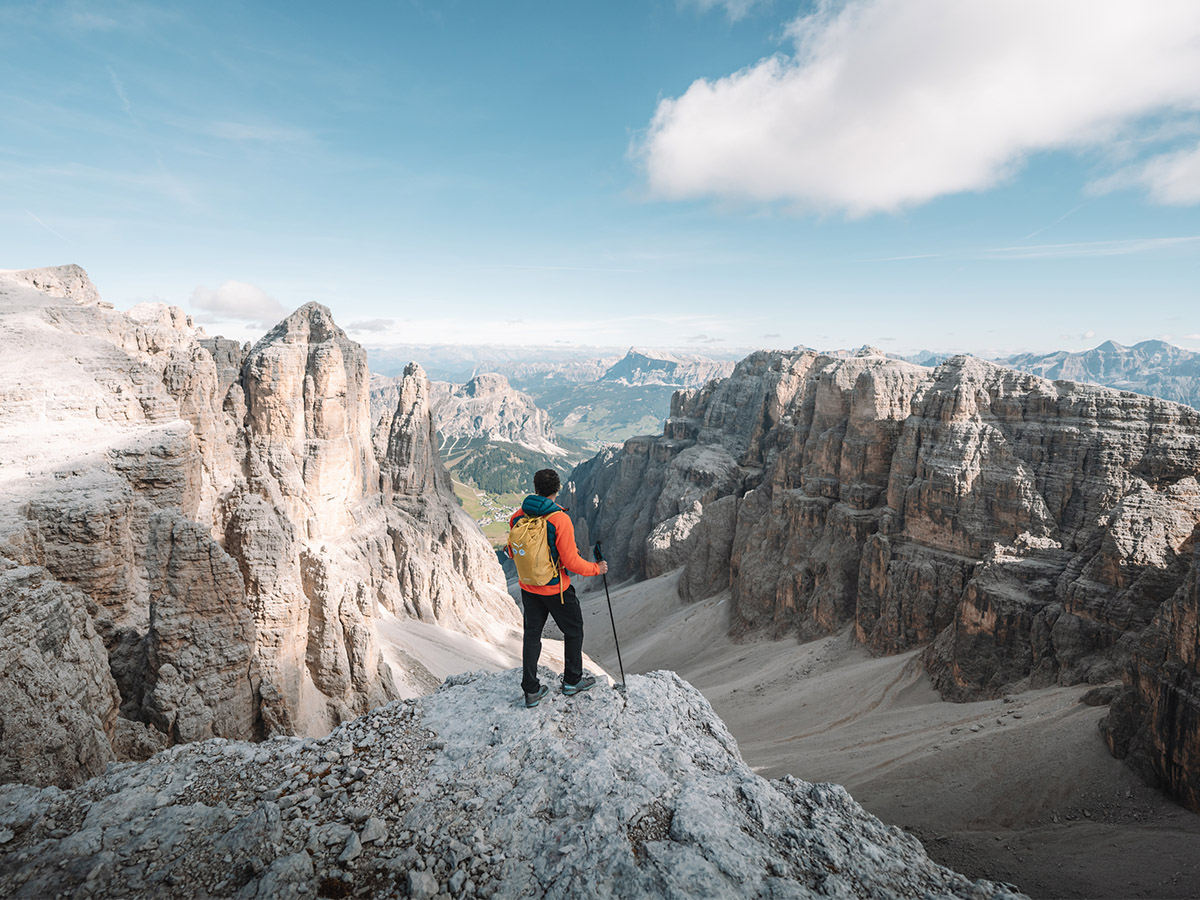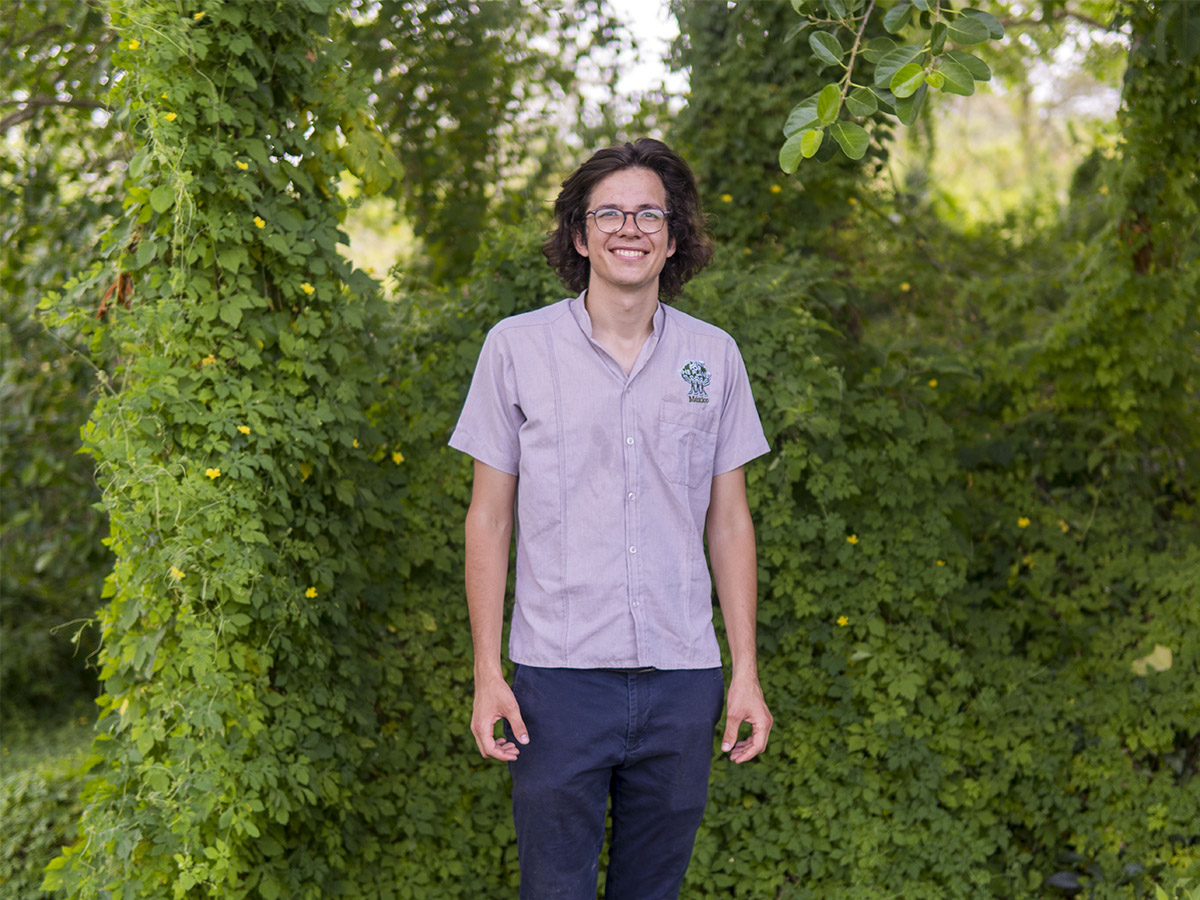AERIAL TRAMWAY DREAMS
TEXT: ERIC BRYAN
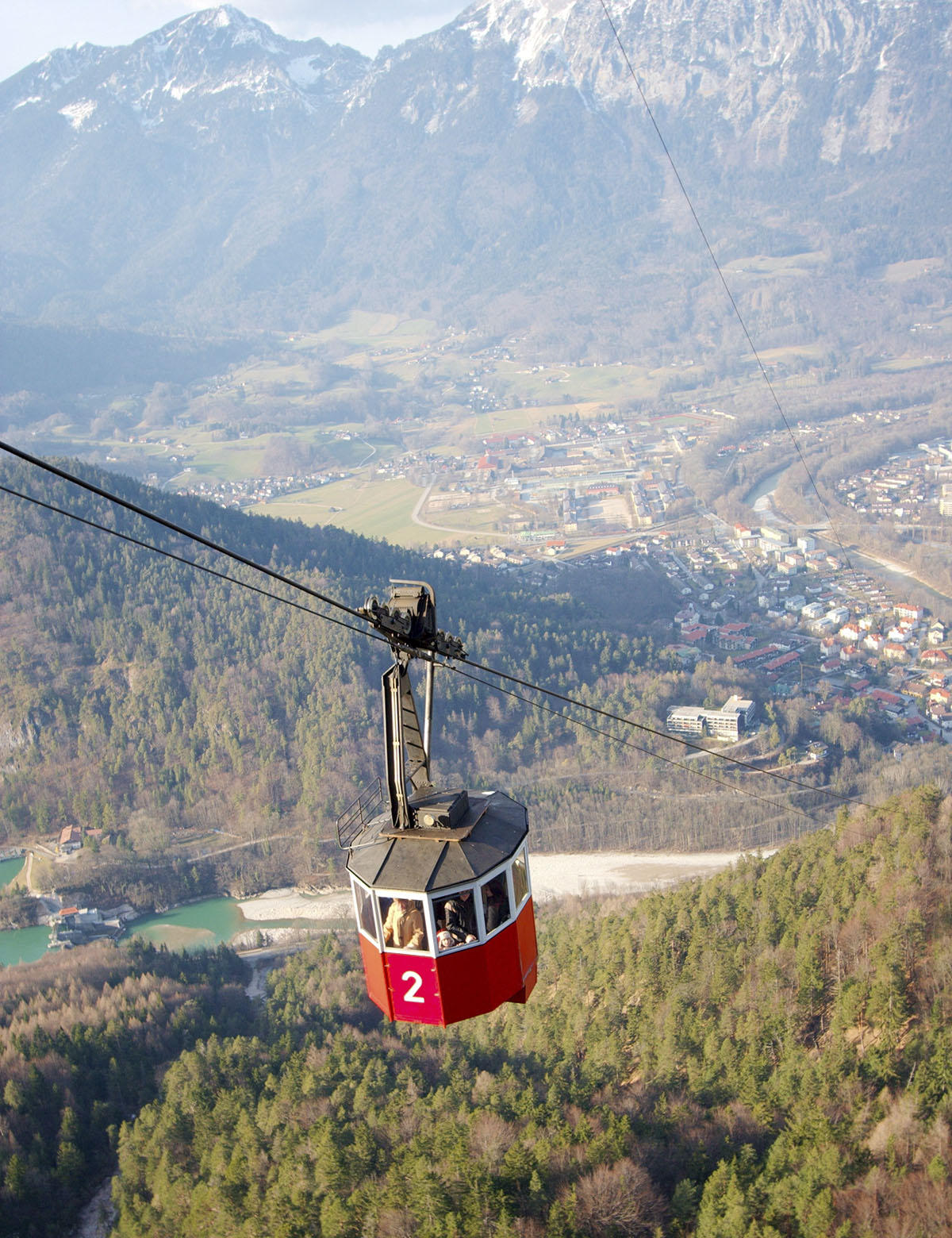
Bad Reichenhall, Bavaria. Photo: Matthias Kabel, mutli-licence with GFDL and Creative Commons CC-BY 2.5
Aerial tramways created to carry passengers to mountain peaks were first constructed in the early 20th century in Spain, Switzerland, Austria and Germany. One example was built in 1913 by Bleichert of Germany in Bozen (Bolzano), in what was then Tyrolean Austria. The classic Alps picture postcard images up through the mid-20th century typically portray a small, sometimes colourful cable car suspended over a snowy mountainside.
The world’s oldest original operating aerial tramway is the Predigtstuhlbahn in Bad Reichenhall, Bavaria. Constructed in 1927-28, the cables connect to three monumental concrete columns between the valley and mountain stations. The cable car climbs 3740 ft at 11 mph. The route’s highest point above the ground is 591 ft.
The Predigtstuhl mountain station is about 5194 ft above sea level, and nearby are a restaurant and Germany’s first mountain hotel. From the restaurant terrace is a panoramic view of Bad Reichenhall, Salzburg and the Berchtesgaden and Chiemgauer Alps. In 2006 the Predigtstuhlbahn became the world’s only aerial tram to be declared a protected monument.
The Eibsee aerial tramway, which went into service in 1963, linked its lower terminus near Lake Eibsee at 3192 ft with its upper station at 9678 ft on the Zugspitze, Germany’s tallest mountain, on the Austrian border. The cars could carry 44 passengers each, the journey taking 10 minutes at up to 22 mph. The Eibsee aerial tramway went out of service in April 2017.
In the autumn of 2014, construction began on a new Zugspitze aerial tram system. Opening on 21 December 2017 the tramway has a new mountain terminal at 9658 ft, and cars with floor-to-ceiling heated glass windows. Each car can carry 120 passengers plus one guard. This cable car system holds three world records for aerial tramways: the longest unsupported cableway span of 10,541 ft, the tallest steelwork pylon of 417 ft, and the greatest elevation difference of 6382 ft over a single cableway section.
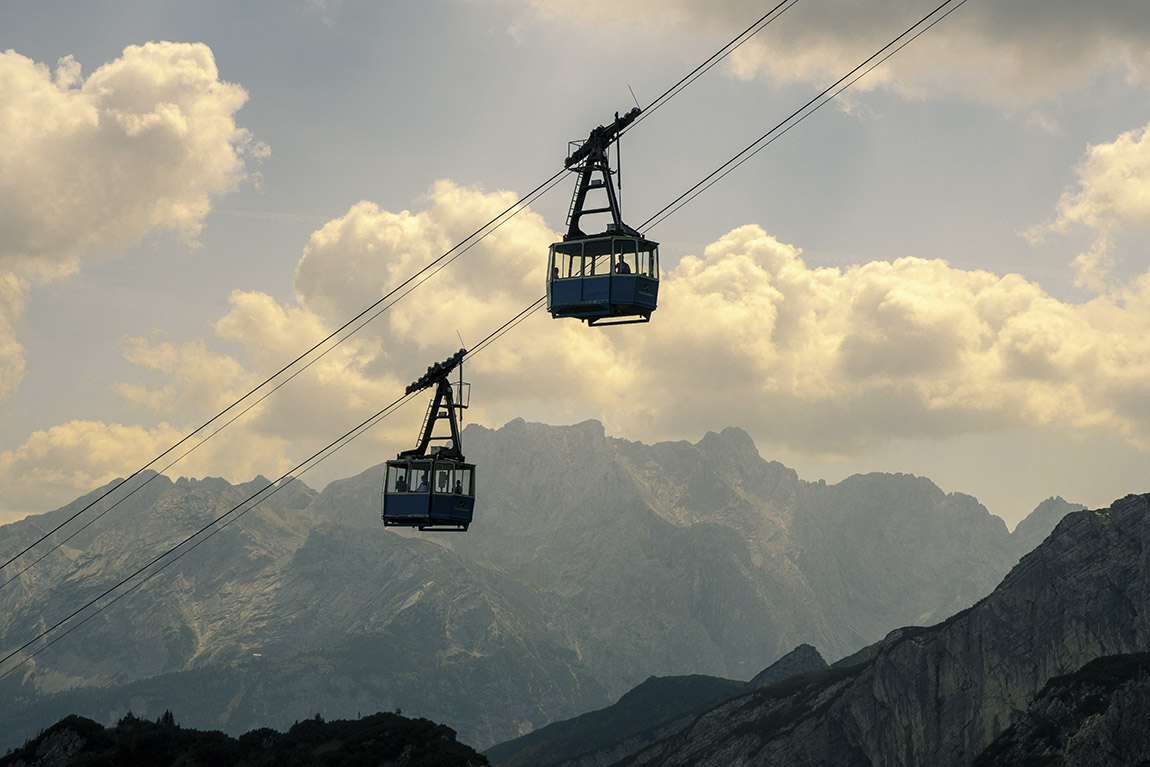
Photo: Unsplash
Austria
Inaugurated on 5 July 1926 the Zugspitzebahn aerial tramway connects the Tyrolean town of Ehrwald with the Zugspitze in the Wetterstein Alps. The Zugspitzebahn held the record for the highest-elevation cable car system. The route rises 5660 ft, and the cars travel at up to 22 mph. The cables are supported by three aerial lift pylons. Near the mountain station which is at about 9679 ft is a museum, restaurant and the Snow Crystal visitor centre which features interactive exhibits about alpine weather phenomena.
Plans were underway in 1919 for the design of an aerial tramway on the Feuerkogel in Upper Austria. Construction began on 28 March 1926 of a material-handling cable car system to aid in the building of the passenger tramway. The material cable car went into operation on 10 August 1926 and enabled the construction of the mountain station and three support towers. During a workers’ strike, two mules were enlisted to keep the project moving. The passenger cable car system was inaugurated on 26 June 1927. The Feuerkogel aerial tramway was updated in 1946, 1955 and 1985. From Ebensee, the car climbs 3639 ft to the mountain station at 5197 ft. Each car carries 37 passengers at up to 27 mph.
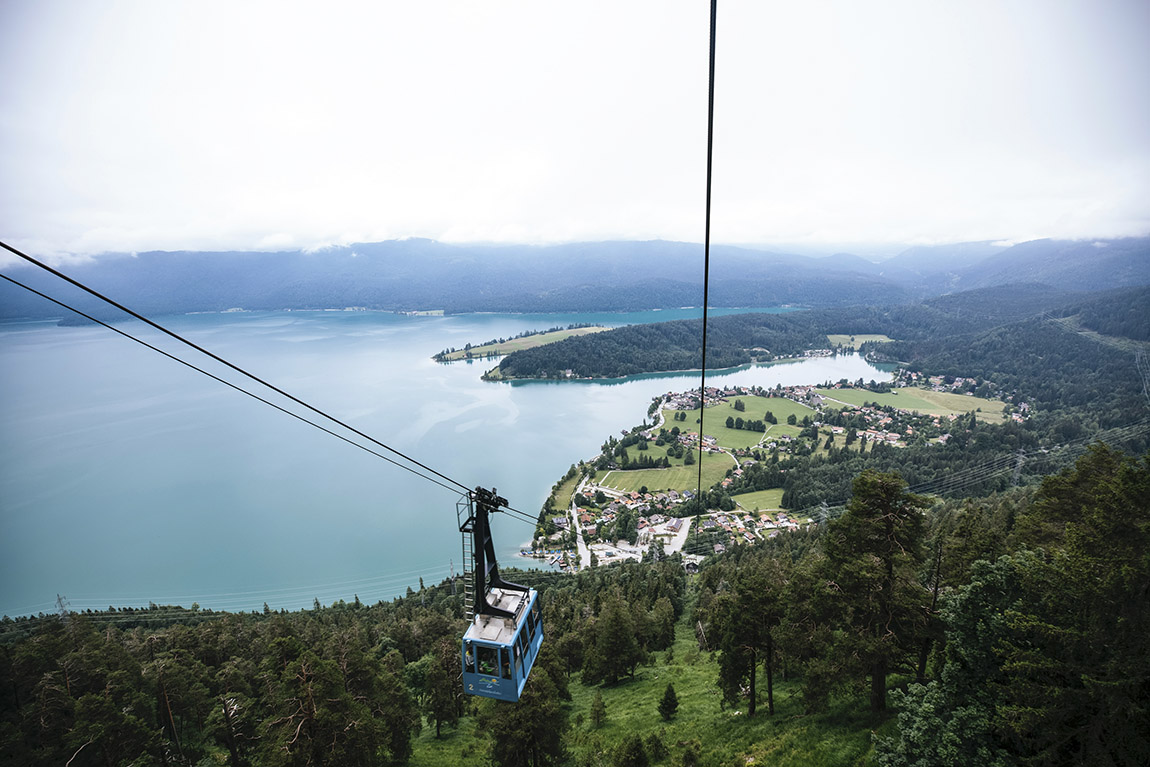
Photo: Unsplash
Switzerland
In Grindelwald in 1905 work began on Switzerland’s first aerial tramway, and one of the earliest cable car systems designed specifically for carrying passengers. Called the Wetterhorn Aufzug, the tramway was intended to carry tourists from the upper part of the village (at 4124 ft) to the top of the Wetterhorn at 12,142 ft. The first section of the tramway went into operation on 27 July 1908, conveying 110 passengers per hour to and from the Enge mountain station at 5502 ft. In order to accomplish the full climb to the peak of the Wetterhorn, the plan was to build the cableway in four sections.
Though the Enge run proved to be popular, tourism to the area dwindled with the outbreak of World War I and the system was closed in 1915. The remainder of the planned route to the peak of the Wetterhorn was never completed. The Enge mountain station has been renovated and is now a preserved heritage site. It’s perched on the cliffs beside the Upper Grindelwald Glacier gorge. A replica of a Wetterhorn Aufzug car is on display at the Hotel Wetterhorn, Grindelwald.
In 1949 in the Wengen mountain resort in central Switzerland, a committee was formed to propose the construction of an aerial tramway which would connect the resort to the Männlichen, a 7687-ft mountain in the Swiss Alps. Construction started in 1953, and the tramway opened in July 1954. The system had two cable cars which could each carry 40 passengers. Two 50-passenger cars replaced these in 1963. There were upgrades to the system in 1973, 1992 and 1993, and two 80-passenger cars supplanted the 1963 cars.
A massive avalanche in February 1999 engulfed the lower station, so a new one was built outside of the avalanche zone, near Wengen’s main street. The cars were replaced again in 2018. The new cars have detachable balconies which enable passengers to ride outside of the cabin. The current aerial tramway climbs 3109 ft, the cars moving at up to 22 mph.

Eibsee cable car at the lower terminus. Photo: Anton Nikiforov, Creative Commons Attribution 3.0 Unported licence
Subscribe to Our Newsletter
Receive our monthly newsletter by email
